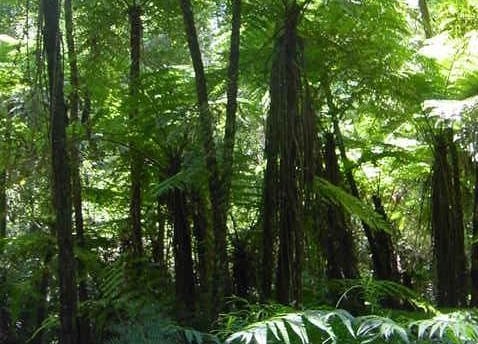The Importance of Species Distribution Modelling in Carbon Finance
Explore the vital role of species distribution modelling in carbon finance, highlighting how it informs conservation efforts, enhances carbon offset projects, and promotes sustainable management practices.
Piniel
2/8/20244 min read


Carbon Finance represents a shift in the discussions around conversations on climate change mitigation and the reduction of greenhouse emissions, especially Carbon Dioxide. A cynical view of it would regard it as the commercialisation of efforts to reduce Carbon Dioxide emissions moving from the somewhat altruistic efforts of previous eras where mitigation initiatives were primarily driven by environmental concerns, public health and preserving the earth for future generations. Carbon Finance introduces a market and product approach, monetizing carbon sequestration into credits and offsets that organisations can buy to cancel out their emissions, as well as incentivising activities that promote mechanisms that reduce emissions. Trees (Forests) play a crucial role in the Carbon Finance discussion due to their significant carbon sequestration potential and their ability to contribute to climate change mitigation efforts. Forest conservation and sustainable management of forest resources thus become vital processes in the grand economy of the world.
Species distribution modelling plays a vital role in forest conservation and management and thus by extension Carbon Finance. It provides valuable insights into the distribution and resource requirements of tree species which helps inform strategies and guide sustainable management practices. Modelling suitable habitats for target species, responses to changes in climate (and other environmental variables) as well as monitoring observed distributions and comparing them with model prediction can all help in effective forest management.
While all tree species contribute to carbon sequestration and thus can play a role in Carbon Finance programs, in the spirit of Orwell’s words, some trees are more equal than others. The selection of trees to include in a Carbon Finance initiative is based on various complex factors. In general, it is important to have a diverse mix of species to enhance ecosystem resilience and promote biodiversity. However, other factors should be taken into account. These include carbon sequestration potential, ecological suitability/adaptability (e.g. native/indigenous species generally thrive in their local environments), co-benefits (species that provide other benefits simultaneously beyond just sequestration would be preferable) and policy/certification requirements.
Tree Species Selection
Species distribution modelling can assist in the process of selecting which species to include in a Carbon Finance forest management initiative. This is done by conducting Habitat Suitability Assessments, which display the potential distribution of species based on environmental variables. The modelling exercise can then pinpoint areas where particular species are likely to thrive or determine if targeted areas are suitable habitats for chosen species.
Determine Species Resilience
Species Distribution Modelling can also be utilised to assess the resilience of species to changes in climate or other environmental variables. Carbon sequestration projects like REDD+ are long-term projects and thus susceptible to climate changes (especially) and other environmental variables. Species Distribution Models can be simulated by incorporating projected future climate scenarios and to asses which species remain suitable or adapt to the environment under the simulated scenarios. The same process of simulating under projected future scenarios can also be applied to other environmental variables like biodiversity and soil moisture etc.
Protection against threats
With forests being considered an asset in Carbon Finance, protecting them against threats is a requirement as failure to do so may result in a significant loss of investment. Of significant interest especially in a conversation on the utility of Species Distribution Modelling, is biological threats. While it is important to note that forests are dynamic ecosystems and thus naturally have evolved to deal with many biological threats, human activities have tended to disturb and render ineffective forests' natural defence capabilities. This is largely by introducing invasive non-native species, fragmenting habitats or altering environments and environmental variables like climate way past the thresholds forests had evolved to deal with threats.
Species Distribution Modelling can be a helpful tool in managing and eliminating threats to forests. It can be used for early detection and monitoring by identifying at-risk areas through modelling the potential distribution of invasive species, pests, or pathogens. Additionally, it can aid in identifying suitable habitats for threats, which can be quarantined or controlled as a management measure. By combining the results and insights from both tree species of interest and biological threats, a risk matrix can be developed to prioritize areas where the asset tree species are at the most risk. This can aid in the implementation of efficient and effective interventions.
Wildlife can also pose a significant threat to forests if not managed properly or if human activities have negatively impacted the natural ecosystem. Species Distribution Modelling can help manage the interactions between wildlife and forests, leading to better forest preservation.
Monitoring and Verification
Species Distribution Modelling can provide a baseline for which to monitor and verify carbon stocks over time. Baseline maps can be generated by modelling the distribution and abundance of native tree species within target areas before a carbon sequestration project is implemented. Distributions after project implementation and at other milestone stages can also be mapped and compared to the baseline to determine changes in distributions and abundance. Species Distribution Models can also assist in validating the accuracy of carbon stock measurements by comparing model estimates with field measurements and remotely sensed data. Specie Distribution Modelling provides a spatially explicit approach to understanding tree species distribution which helps in monitoring and estimating their associated carbon stocks.
Species Distribution Modelling is a crucial tool for forest conservation and management, particularly in the context of Carbon Finance. By analyzing the distribution of different species and their impact on carbon stocks, organizations involved in carbon emission reduction and climate change initiatives, such as REDD+ projects, can easily identify areas with high potential for carbon sequestration. This allows them to proactively manage and mitigate threats to their forest assets, as well as monitor and verify their carbon stocks.